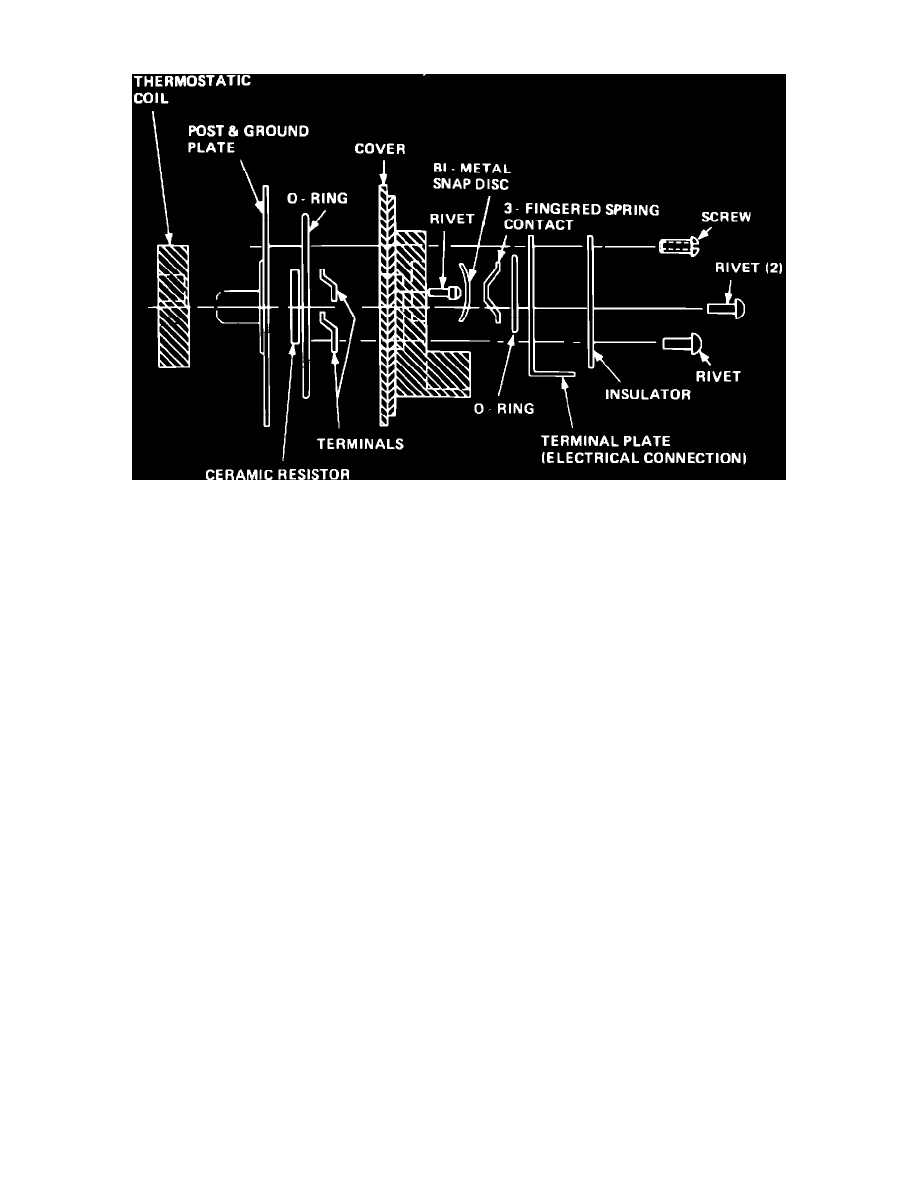Cutlass Ciera FWD L4-151 2.5L (1982)

Choke Thermostat/Heater: Description and Operation
Electric choke assembly exploded view
NOTE: The electric assist choke system does not change any service procedures and cannot be adjusted. If the choke system is found to be out of
calibration, the choke unit must be replaced.
PURPOSE
The electric assist choke helps to reduce hydrocarbon (HC) and carbon monoxide (CO) emission during start and warm-up periods--choke-on--by
opening the choke more rapidly at ambient temperatures above 60-65° F, than it does at ambient temperatures below 60°-65° F.
OPERATION
System Components--Fig 39
Thermostatic Coil
Ceramic Resistor
Cover
Bi-Metal Snap Disc
Contact Spring.
Ceramic Resistor
The electrically actuated ceramic resistor--composed of a small center section for gradual heating and a larger outer section for rapid heating of
the thermostatic coil--heats the thermostatic coil gradually relaxing coil tension allowing the choke valve to open.
The electric current is supplied to the ceramic resistor from the oil pressure switch when the engine is running and oil pressure is above the
minimum value for the switch.
Air Temperatures Below 50° F
As current applied to the small section of the ceramic resistor allows slow opening of the choke valve--for good engine warm-up;
-
A bi-metal disc closes the spring loaded contact applying current to the large section of the ceramic resistor.
-
This increases heat flow to the thermostatic coil, opening the choke valve more rapidly .
Air Temperatures Between 50-70° F
Current is applied to the small section--or both the small and large sections--of the ceramic resistor, producing the heat required to control
choke valve position for optimum engine operation.
Temperatures Near 60 to 65°F
Designed to open choke more rapidly when temperatures are 60 to 65° F or greater, than when temperatures are below 60 to 65° F.
Air Temperatures Above 70° F
Since leaner air/fuel mixtures are required for warmer temperatures current is applied to both the small section and large section--through the
